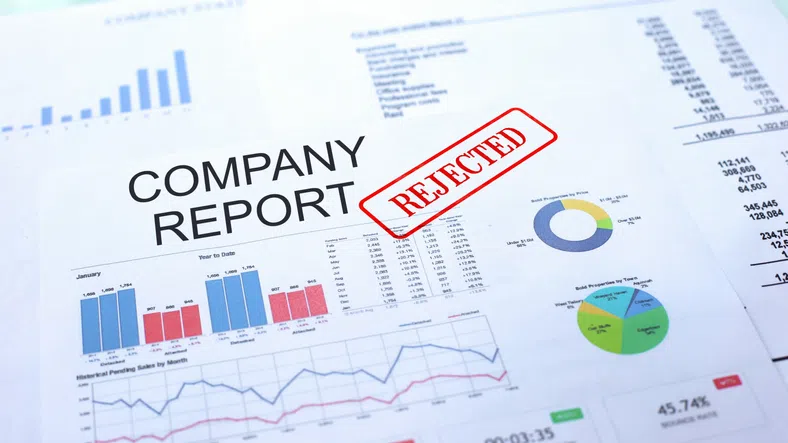As owners and managers, your responsibility is to review accurate financial statements on a timely basis. This allows you to make good business decisions and spot minor issues before they become major crises.
Here are seven, easy-to-spot things to look for when analyzing your financial statements.
1. Negative Cash on Your Balance Sheet.
A business cannot have negative cash in the bank. Bankers will return any check to its sender without payment if there is not enough money in that account to cover the amount of the check.
Normally when I see negative cash, it means that a contractor’s bookkeeper is lazy. She printed all the checks that have to be paid for the time period and is holding them until there is enough cash in your checking account to cover the checks. With negative cash in the bank, a business owner doesn’t have an accurate picture of cash or accounts payable, so he can’t make good business decisions.
2. An Even Inventory Number — or No Inventory.
There is less than a one in one million chance that a business’ inventory is exactly $20,000 or $3,500. When I see this I know inventory is not being properly tracked and that material cost is usually not accurate either. Or, if I see no inventory at all, I know the statements are wrong.
Inventory is a bet. A company owner has bet his hard earned dollars that when the company buys a part or piece of equipment that it can sell it soon. Making good bets is critical! Look at inventory in warehouses and on trucks. How much inventory has been sitting on the shelves for more than a year? Those are bad bets.
3. Balance Sheet that Doesn’t Balance.
The definition of a balance sheet is that assets equal, or balance, liabilities plus net worth. If a company’s balance sheet doesn’t balance, then someone has incorrectly entered information into the accounting software.
Company owners cannot make any good decisions about their business when the balance sheet doesn’t balance.
4. Negative Loan Balances.
A negative loan balance means that the bank owes the company who borrowed money for a loan. Banks don’t owe companies unless the company has overpaid the loan and usually this is a very small amount due to a miscalculation at the last loan payment.
Generally when I see this, a bookkeeper has entered the entire monthly loan payment against the loan. Part of the monthly loan payment is principal reduction of the loan amount and part is interest the bank is charging for the privilege of obtaining that loan.
The interest is an expense to the business and is shown on its profit and loss statement. The loan principal reduction is shown on its balance sheet.
5. Negative Payroll Taxes Payable.
Like negative loan balances, it is unlikely that the Internal Revenue service or your state revenue department owes the company money. Normally this is an incorrect entry from payroll.
6. No Rent, Utility Bill, etc. (or Extremely High Rent, Utility Bill, etc.).
These are seen in the overhead segment of your profit and loss statement. The company pays rent every month. It pays the electric bill every month.
If there is a month with no rent or extremely high rent, the likelihood is that the bookkeeper didn’t put the expense in one month and doubled the expense in another month. Both give inaccurate profit and loss statements.
7. Inconsistent Gross Margins.
If the company is pricing its services and products the same every time, then the gross margins should be the same. Different departments and different classifications of work can have different margins.
For example, the margin on replacing a fan motor is probably different than the margin on replacing a whole air conditioning system. The fan motor repair margin, however, should be the same each time (with rare exceptions).
Differing gross margins is the first clue that labor productivity is up or down. Or, the accounting is wrong — the company has revenue in one month and the expenses against that revenue in a different month.
Either way, owners cannot make good financial decisions when gross margins are inconsistent.
Spotting these financial statement mistakes gives company owners a good idea that the company’s financial statements are wrong. Accurate financial statements are critical to ensure that the business is profitable or to give owners the information they need to take steps to make it profitable.
Ruth King has over 25 years of experience in the hvacr industry and has worked with contractors distributors and manufacturers to help grow their companies and become more profitable. She is president of HVAC Channel TV and holds a Class II (unrestricted) contractors license in Georgia. Ruth has written two books: The Ugly Truth About Small Business and The Ugly Truth About Managing People. Contact Ruth at ruthking@hvacchannel.tv or 770.729.0258






